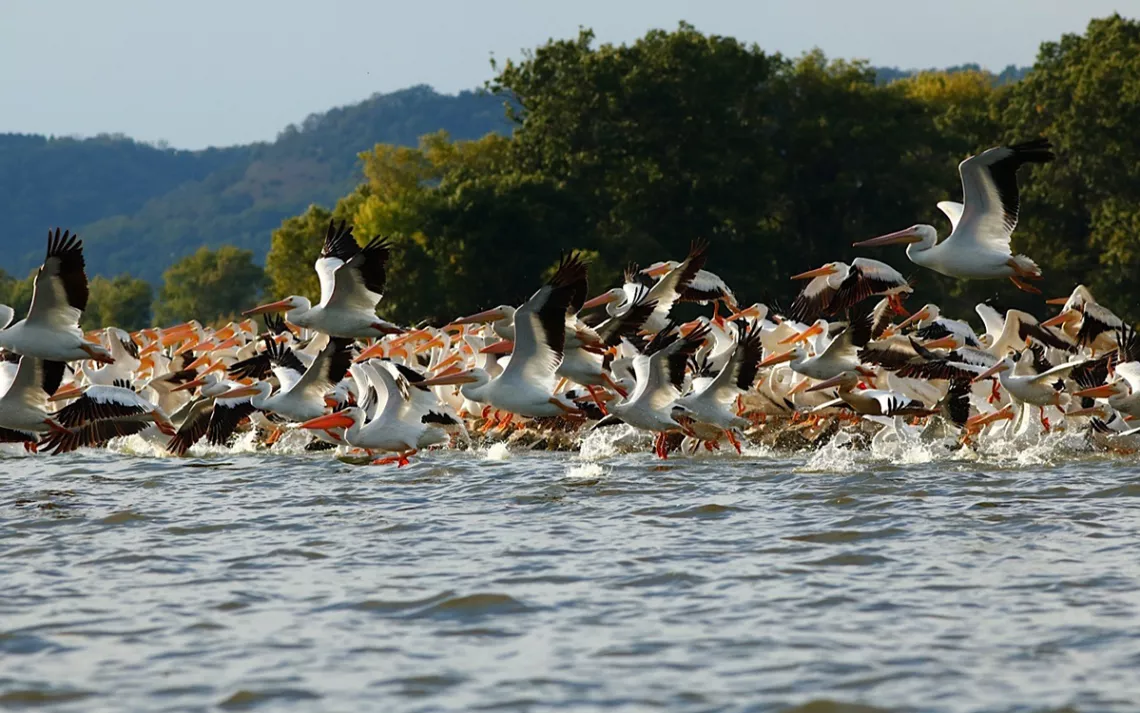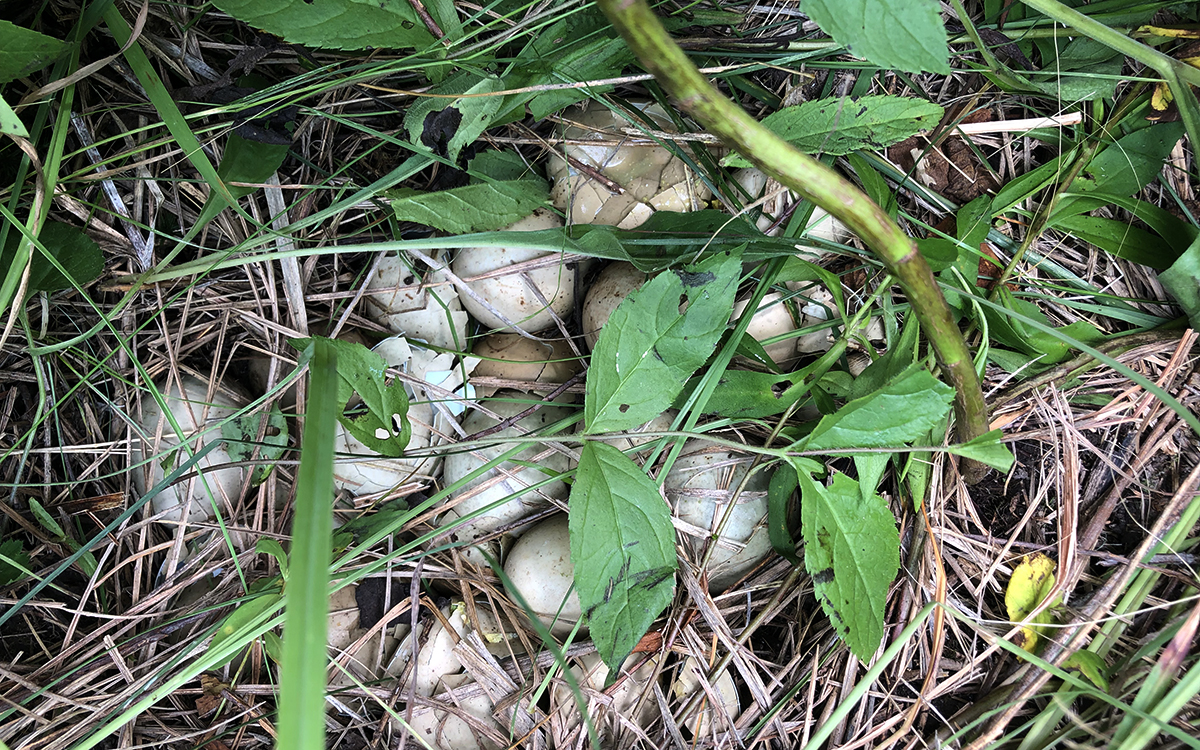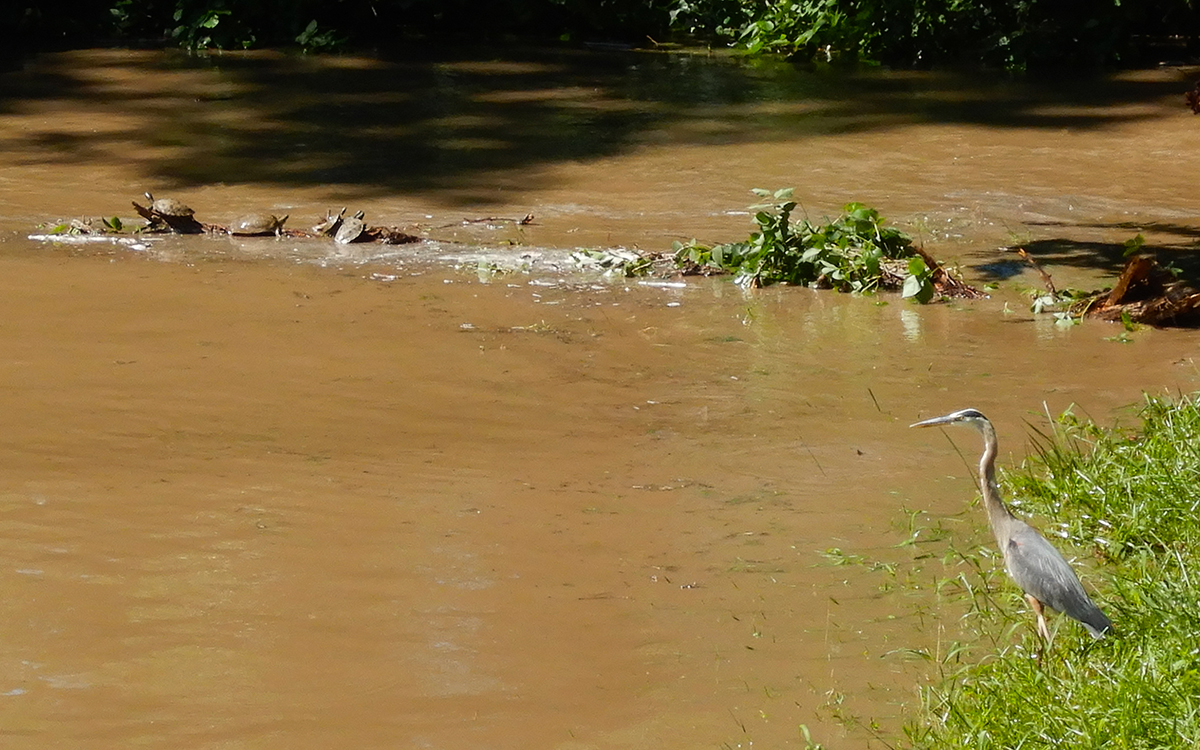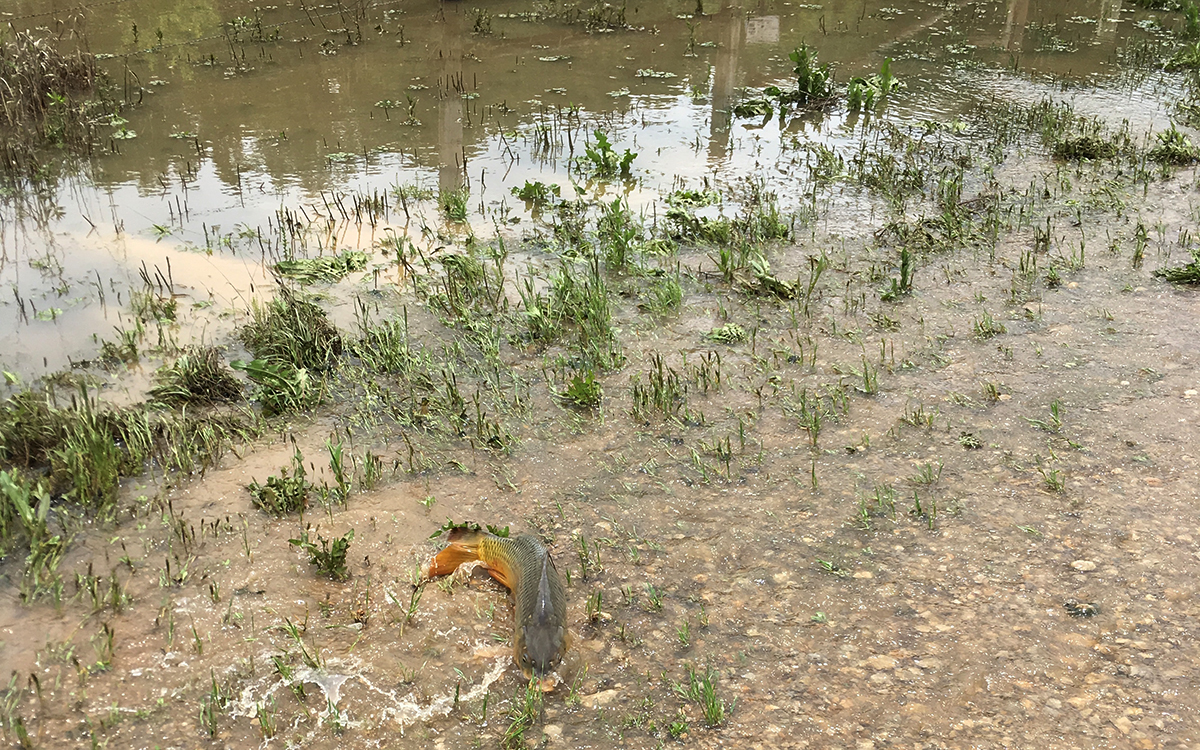What Does Massive Flooding in the Midwest Mean for Wildlife?
Some species struggle to survive, while others become more invasive

American pelicans | Courtesy of Larry Palmer/USFWS
Just outside Lecompton, Kansas, a town of fewer than 700 people in the northeast part of the state, hundreds of stranded fish lay in a ditch, unable to get back to the Kansas River. Rising waters forced these common carp up in late May; when the river receded, they were left helpless.
The Midwest has been experiencing historic flooding since March, and while some wildlife is benefiting from the extra water, other animals are having a harder time getting by. “Flooding is not [necessarily] a bad thing for wildlife,” says Sabrina Chandler, area supervisor for the US Fish and Wildlife Service in the upper Mississippi region, which covers parts of Illinois, Iowa, Minnesota, and Wisconsin. While most animals that live in floodplains have adapted to it, Chandler says, the extreme duration of Midwestern flooding is causing major problems for ground-nesting birds and deer fawns, the populations of which are “definitely taking a hit.”
Joe Wilkinson, president of the Iowa Wildlife Federation, notes that state officials expect a decline in deer as well as ground-nesting birds like pheasant and quail. While the state doesn’t yet have the hard data, Wilkinson notes, “I’m seeing more deer along the side of the road that have been hit.” He presumes these deer—including fawns, which he says usually “stay put”—are wandering near roads because they’re being pushed out of their flooded habitats. On an early July hike, Wilkinson found an abandoned pheasant nest with 18 eggs, which likely indicates that floodwaters pressured the mom to flee. “It happens, but it kind of struck a chord,” he says, adding that other low-nesting birds such as song sparrows could suffer due to the deluge.

Abandoned pheasant nest Ledges State Park in Iowa | Courtesy of Joe Wilkinson
Compounding matters, Midwest fauna was hit especially hard this year thanks to last winter’s above-average levels of snowfall—the National Weather Service reported heavy snowpack across the Midwest, from the Dakotas to Missouri and Kansas—followed by heavy rains in the spring and summer. One region of north-central Iowa, for instance, received 52 inches of snow over the winter; that’s nearly 23 inches above average. The state’s Department of Natural Resources predicts lower pheasant and quail populations from snowfall alone, Wilkinson says.
Dawn Buehler, a Kansas Riverkeeper with Friends of the Kaw, reports that sandbars on the Kansas River have been underwater since March, due mostly to rains in watersheds and the impacts of snowmelt in the upper Midwest. Their absence disrupts the routines of many species that use them for nesting and habitat; namely, turtles and shorebirds. (Buehler’s colleague recently spotted 10 turtles crowded onto a single log at Clinton Lake, one of the state’s four major reservoirs.) The absence of sandbars also affects migratory birds like geese, which normally lay their eggs on these river wildlife refuges but will now likely have to move farther from the river and into the floodplain.

Critters crowded on a log in the Kansas River | Courtesy Lisa Grossman
Not only have high waters thwarted river access for land dwellers like deer and coyotes—species that rely on the river corridor for wildlife pathways—but they also worsen water quality. When rivers move into new territory, they can pick up pollutants like oil, gas, pesticides, trash, and fertilizers. “Historically, the rivers have been connected to their floodplain, but with the development of communities along our rivers and the addition of levees to reduce flooding impacts, the rivers are no longer connected,” Buehler explains, adding that many sewage wastewater treatment systems located along waterways are unable to protect sewage during floods and end up dumping it straight into rivers and streams.
River-residing mammals like beavers and otters normally den on riverbanks—but their homes are currently submerged. And those animals that live near Kansas’s dammed reservoirs are being forced to flee, Buehler adds, noting that more deer seeking out food and cover have been spotted in residential areas.
It’s not just animal species that are suffering from historic flooding—it’s doing a number on habitats themselves. While many trees have evolved to handle inundation, for instance, the extreme duration of this year’s deluge means they can’t get oxygen to their roots; when roots don’t function properly, the entire tree system suffers. Floods also cause excess sedimentation, Chandler says, which can spawn a host of other complications in river ecosystems—preventing animals from spotting food, inhibiting the growth of natural vegetation, and disrupting the natural food chain. In the future, large sediment deposits can even cause upstream flooding.
It’s not all bad news for the Midwest’s biodiversity, though.
“The fish populations are really doing great, actually,” Chandler says, explaining that flooding provides more backwater areas, a type of habitat that supports fish reproduction and food availability. Wilkinson notes that Iowa has had a “heck of a crappie hatch this year.” Back in Kansas, the flood’s wildlife benefits could present a blessing and a curse—while more water may be advantageous for a number of fish species, others, like those stranded common carp near Lecompton, suffer. Further, the flood could help expand the range of the highly invasive Asian carp, which the state’s wildlife officials have been fighting for years, as they cause damage to native fish populations, out-competing them for food and other resources. The species is currently rampant in the lower parts of the Kansas River system, and Buehler speculates that the flooding has the invasive fish well on their way to the previously untraversed upper part of the river.

Stranded carp in Kansas | Courtesy Dawn Buehler
As global heating continues to exacerbate sea level rise and extreme weather, the nation’s floodplains are expected to grow by approximately 45 percent by century’s end. Wildlife officials at USFWS are preparing to mitigate the consequences of more frequent flooding on wildlife by focusing on floodplain management and improved land-use practices. To that end, the service is working with private landowners to implement buffer strips, which catch sediment and runoff from agricultural fields before it pollutes streams. USFWS also works to maintain riparian areas, which can protect against streambank erosion and loss of floodplain forest.
The solutions, of course, are complex. In sum, Wilkinson says, to protect wildlife now and into the future, we should all be doing “anything we can do that can help turn down the effects of climate change.”
 The Magazine of The Sierra Club
The Magazine of The Sierra Club



